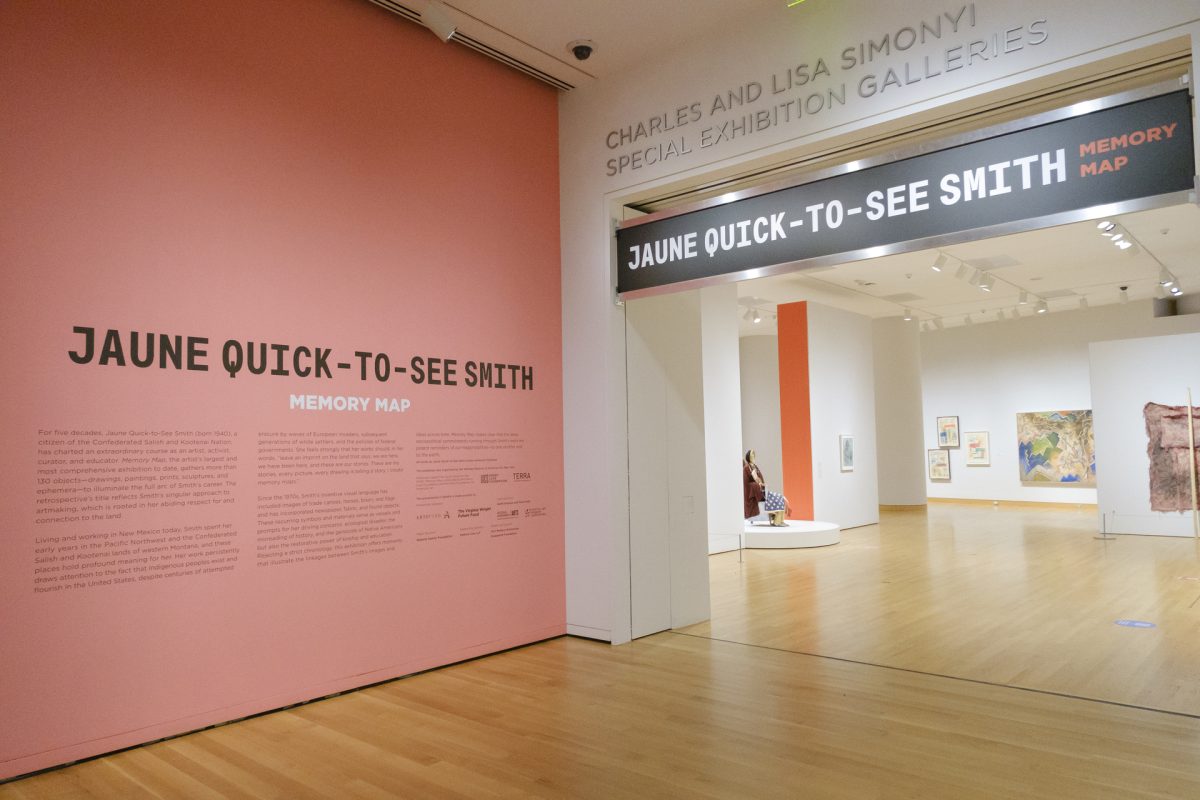Memory Map Smartphone Tour: Introduction

“It’s that maybe [my art] will start to crack this whole issue of Native Americans being invisible. Being Indigenous in making art means that you’re looking at the world through lenses that are curved or changed by your upbringing and by your worldview.”
– Jaune Quick-to-See Smith
Welcome to the world of Jaune Quick-to-See Smith! With Memory Map now on view at SAM, we’ll be sharing excerpts from the exhibition’s free smartphone tour throughout its run in Seattle. Produced by the Whitney Museum of American Art, the tour is accessible via our SoundCloud or through your own device by scanning the QR code next to select works on view in the galleries. Verbal descriptions of some of the artworks on view are also available for low/no vision visitors.
The tour’s first stop introduces listeners to Jaune Quick-to-See Smith and the many themes her artwork explores. It also introduces listeners to the guest artists featured throughout the tour, including Neal Ambrose-Smith, Andrea Carlson, Jeffrey Gibson, G. Peter Jemison, Josie Lopez, and Marie Watt. Tune in now!
Memory Map Introduction
NARRATOR: Welcome to Jaune Quick-to-See Smith: Memory Map. Together we’ll explore five decades of Smith’s career, looking at paintings, prints, drawings and sculpture.
JAUNE QUICK-TO-SEE SMITH: Most people will never have heard of me. And that’s not off-putting.
NARRATOR: Jaune Quick-to-See Smith:
JAUNE QUICK-TO-SEE SMITH: It’s that maybe it will start to crack this whole issue of Native Americans being invisible. Being Indigenous in making art means that you’re looking at the world through lenses that are curved or changed by your upbringing and by your worldview.
NARRATOR: For Smith, who is a citizen of the Confederated Salish and Kootenai Nation, that worldview first began to form in the Pacific Northwest and western Montana. Today, Smith lives and works in New Mexico. Throughout her life and work, she has underscored the importance of the land and of Indigenous communities. As we move through the exhibition, we’ll look at the ways in which Smith addresses the traumas of Native American people with rigor, inventiveness, and critical humor.
You can use this guide to explore the works in any order you wish. As you go, you’ll be hearing not only from Smith but from writers and other artists including Neal Ambrose-Smith, Andrea Carlson, Jeffrey Gibson, G. Peter Jemison, Josie Lopez, and Marie Watt.
– Lily Hansen, SAM Marketing Content Creator
Photo: Alborz Kamalizad.